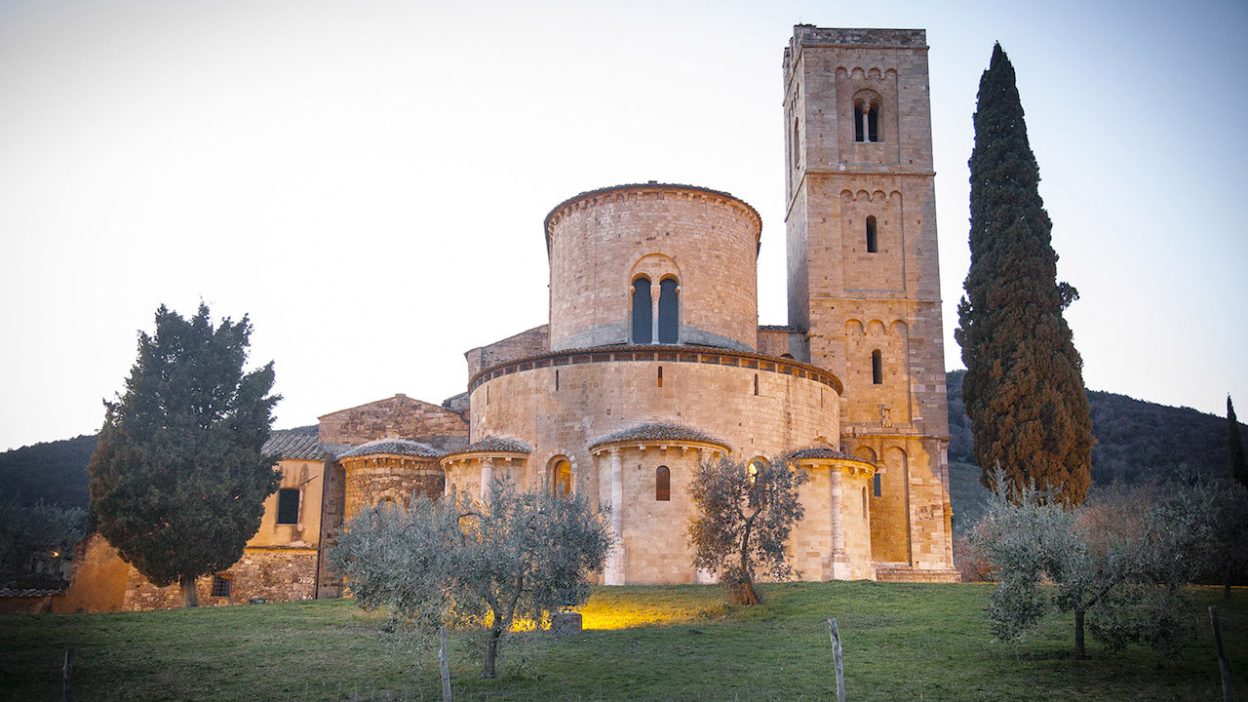The Abbey of Sant’Antimo in Italy is an architectural and historical gem, nestled in the breathtaking landscape of Tuscany. With its beautiful Romanesque design, it has captivated visitors for centuries. Recently announced plans aim to enhance its appeal and ensure its preservation for future generations.
Historical Significance of the Abbey of Sant’Antimo
The Abbey of Sant’Antimo has a rich and storied history that dates back to the 9th century. It is believed to have been established by Charlemagne, who sought to create a haven for monks dedicated to the Benedictine order. Its location along ancient pilgrim routes made it a significant stop for travelers seeking spiritual refuge. Over the centuries, the abbey became a major center of learning and spirituality, influencing the region’s culture.
The structure itself stands as a testament to the architectural prowess of the time. Its features, including the stunning circular apse and intricately carved columns, offer a glimpse into the medieval era. The history of the monastery intertwines with local and religious events, marking it as a focal point for both tourists and scholars.
Current State of the Abbey
Currently, the Abbey of Sant’Antimo is an active place of worship as well as a tourist attraction. Many visitors flock to the site to admire its beauty and tranquility while attending Mass and other liturgical services. However, like many historical sites, the abbey faces challenges due to the ravages of time, which have led to deterioration in certain areas.
Recent inspections have highlighted some pressing issues, including erosion of the stone facade, structural weaknesses, and the need for improvements in visitor facilities. Addressing these challenges is crucial to not only preserve the abbey but also to enhance the experience for visitors who come to admire this historic site.
Planned Restoration Efforts
To address the need for restoration, local authorities and conservation experts have proposed several changes aimed at preserving the Abbey of Sant’Antimo. The first phase of restoration will focus on the restoration of the façade and the strength of the supporting walls. This work will involve careful cleaning and repairing of the stonework, ensuring that any additions are in keeping with the historical integrity of the structure.
Additionally, efforts will be made to improve drainage systems around the abbey, preventing water damage during rainy seasons, which poses a consistent threat to the building’s foundation. The restoration plans are designed to honor the site’s historical significance while ensuring that modern needs are met.
Visitor Experience Enhancements
Another key element of the planned changes is to enhance the visitor experience. As tourism continues to rise, the need for better facilities and services has become apparent. Plans include constructing new visitor centers that will provide information on the abbey’s history, nearby attractions, and events.
Educational programs are also part of the strategy, aimed at engaging visitors with the abbey’s rich cultural heritage. For instance, guided tours could be introduced, allowing guests to understand the historical context of the architecture and surrounding landscape better. This initiative aims to create a more enriching experience and foster a deeper appreciation for the abbey’s significance.
Sustainability Measures
Sustainable tourism practices are increasingly important for historical sites, and Sant’Antimo is no exception. The restoration and enhancement plans will incorporate eco-friendly materials and methods where possible. This approach aligns with Italy’s broader commitment to protecting its cultural heritage while embracing sustainability.
Efforts could include the installation of solar panels to help power visitor centers with renewable energy. The abbey is also considering rainwater harvesting systems to reduce water consumption. Such measures are intended not only to reduce environmental impact but also to serve as an example of responsible tourism.
Cultural Events and Programs
Along with structural changes and visitor enhancements, there is a growing interest in increasing the cultural activities held at the Abbey of Sant’Antimo. Plans have been made to develop a calendar of events that showcases local music, art, and history. Hosting concerts in the abbey’s courtyard, art exhibitions, and historical reenactments could attract a wider audience and make the abbey a cultural hub.
These events will also create opportunities for local artisans and performers to showcase their talents, generating further interest in the abbey and enhancing the local economy. Offering workshops and lectures on history and photography in conjunction with the renovated facilities could attract art enthusiasts and historians alike.
Community Involvement
Engagement with the local community is a vital aspect of the planned changes. Authorities are exploring ways to involve residents in restoration efforts, ensuring that the abbey remains a cherished part of the local identity. Community meetings could facilitate input on desired changes and programming, fostering a sense of ownership among locals.
Volunteering opportunities may also arise, encouraging residents to take part in organized clean-up days and preservation workshops. Such involvement not only supports the conservation efforts but also strengthens the bond between the abbey and the local population.
Impact on Tourism
The planned changes to the Abbey of Sant’Antimo are expected to have a positive impact on local tourism. By addressing structural issues, enhancing visitor experiences, and promoting cultural activities, the abbey is poised to draw even more visitors. Increasing foot traffic can lead to the development of surrounding businesses, benefiting not only the abbey but also the local economy.
As the abbey continues to uphold its historical significance while adapting to modern needs, it will likely become a more popular destination for travelers seeking to immerse themselves in history and culture. This dual focus on preservation and enhancement promises a bright future for both the site and its community.
Conclusion
The Abbey of Sant’Antimo represents a significant piece of Italy’s cultural and historical landscape. As plans for restoration and enhancement take shape, there is hope that this architectural marvel will not only withstand the test of time but thrive as a destination for future generations. Through careful restoration efforts, the incorporation of sustainable practices, and community involvement, the abbey is set to shine brighter than ever, maintaining its role as a serene sanctuary and a vibrant cultural center.
FAQs
What should visitors bring when visiting the Abbey of Sant’Antimo?
Visitors are advised to bring comfortable footwear for walking on uneven terrain and to dress appropriately for a place of worship. Water and snacks are also good to have for longer visits.
Are there any fees to visit the Abbey of Sant’Antimo?
As of now, entry to the abbey is typically free. However, donations are encouraged to support ongoing restoration efforts and maintenance.
Can visitors participate in religious services at the abbey?
Yes, visitors are welcome to attend Mass and other religious services. It is recommended to check the schedule beforehand for timings.
Is the Abbey of Sant’Antimo accessible for individuals with mobility challenges?
Given its historical architecture, certain areas may present challenges for those with mobility issues. However, efforts are being considered to improve accessibility in future renovations.
How can tourists contribute to the preservation of the Abbey?
Tourists can contribute by making donations, participating in organized clean-up events, or simply spreading awareness about the abbey’s significance and its need for preservation.



